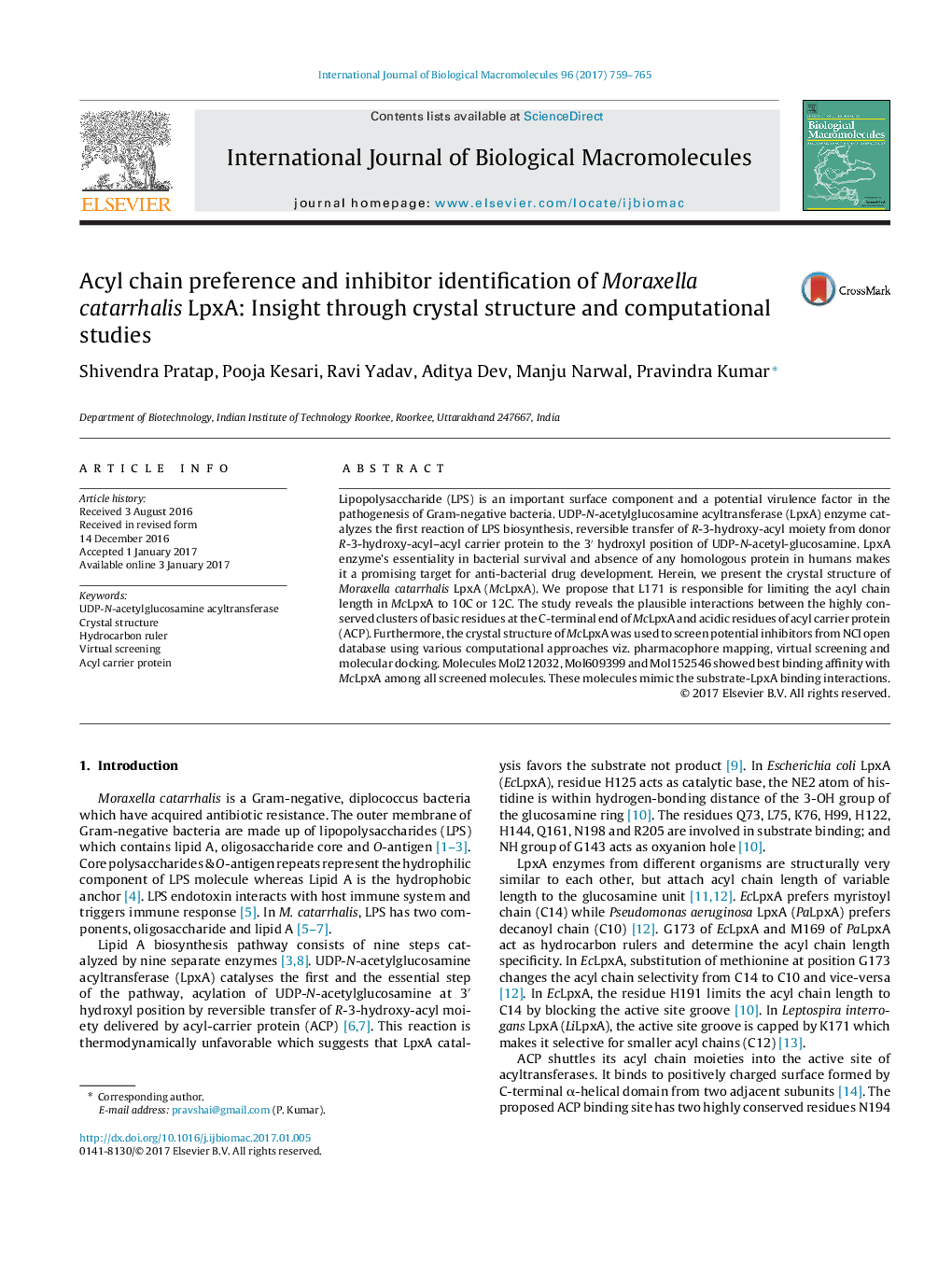| Article ID | Journal | Published Year | Pages | File Type |
|---|---|---|---|---|
| 5512234 | International Journal of Biological Macromolecules | 2017 | 7 Pages |
Abstract
Lipopolysaccharide (LPS) is an important surface component and a potential virulence factor in the pathogenesis of Gram-negative bacteria. UDP-N-acetylglucosamine acyltransferase (LpxA) enzyme catalyzes the first reaction of LPS biosynthesis, reversible transfer of R-3-hydroxy-acyl moiety from donor R-3-hydroxy-acyl-acyl carrier protein to the 3â² hydroxyl position of UDP-N-acetyl-glucosamine. LpxA enzyme's essentiality in bacterial survival and absence of any homologous protein in humans makes it a promising target for anti-bacterial drug development. Herein, we present the crystal structure of Moraxella catarrhalis LpxA (McLpxA). We propose that L171 is responsible for limiting the acyl chain length in McLpxA to 10C or 12C. The study reveals the plausible interactions between the highly conserved clusters of basic residues at the C-terminal end of McLpxA and acidic residues of acyl carrier protein (ACP). Furthermore, the crystal structure of McLpxA was used to screen potential inhibitors from NCI open database using various computational approaches viz. pharmacophore mapping, virtual screening and molecular docking. Molecules Mol212032, Mol609399 and Mol152546 showed best binding affinity with McLpxA among all screened molecules. These molecules mimic the substrate-LpxA binding interactions.
Related Topics
Life Sciences
Biochemistry, Genetics and Molecular Biology
Biochemistry
Authors
Shivendra Pratap, Pooja Kesari, Ravi Yadav, Aditya Dev, Manju Narwal, Pravindra Kumar,
